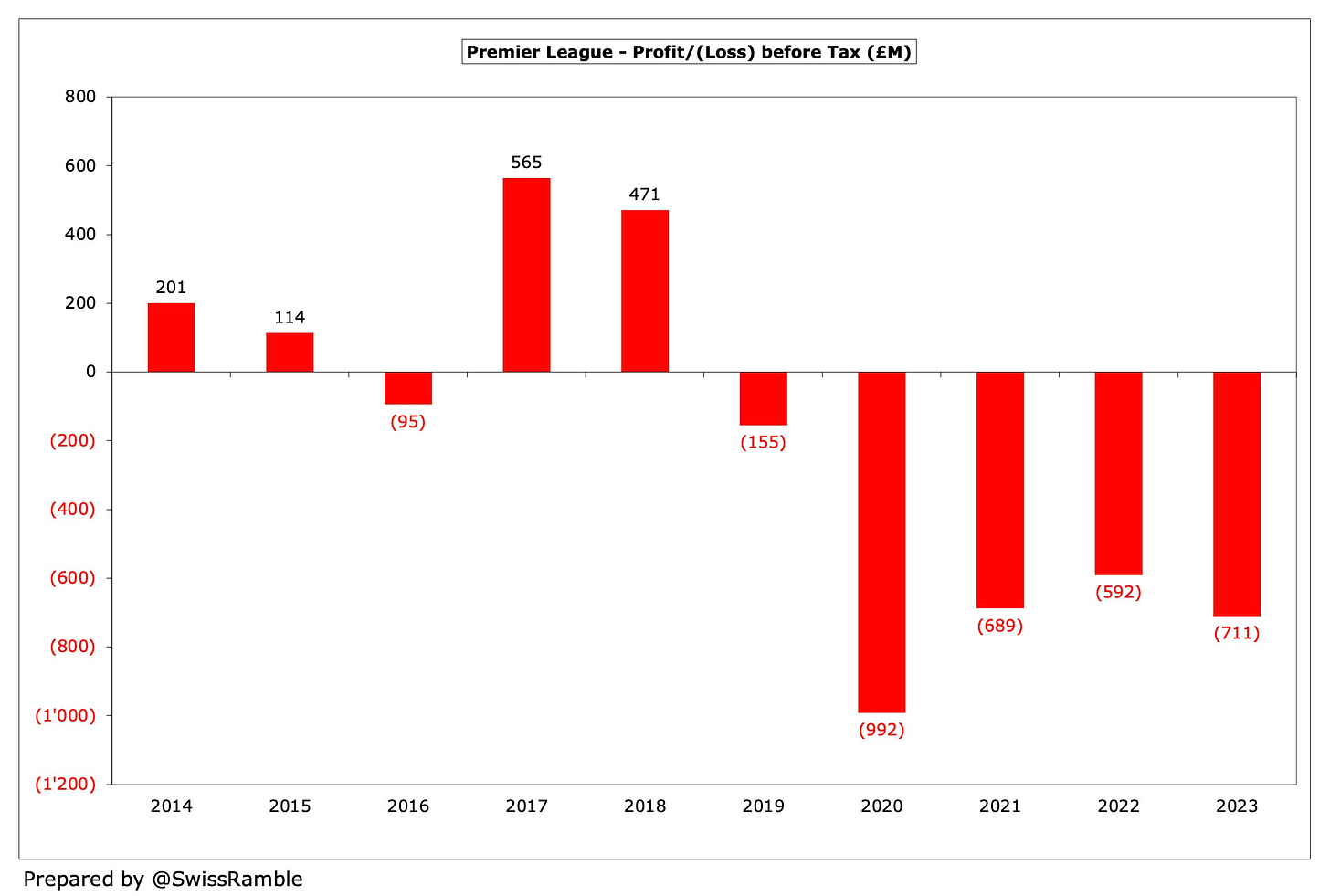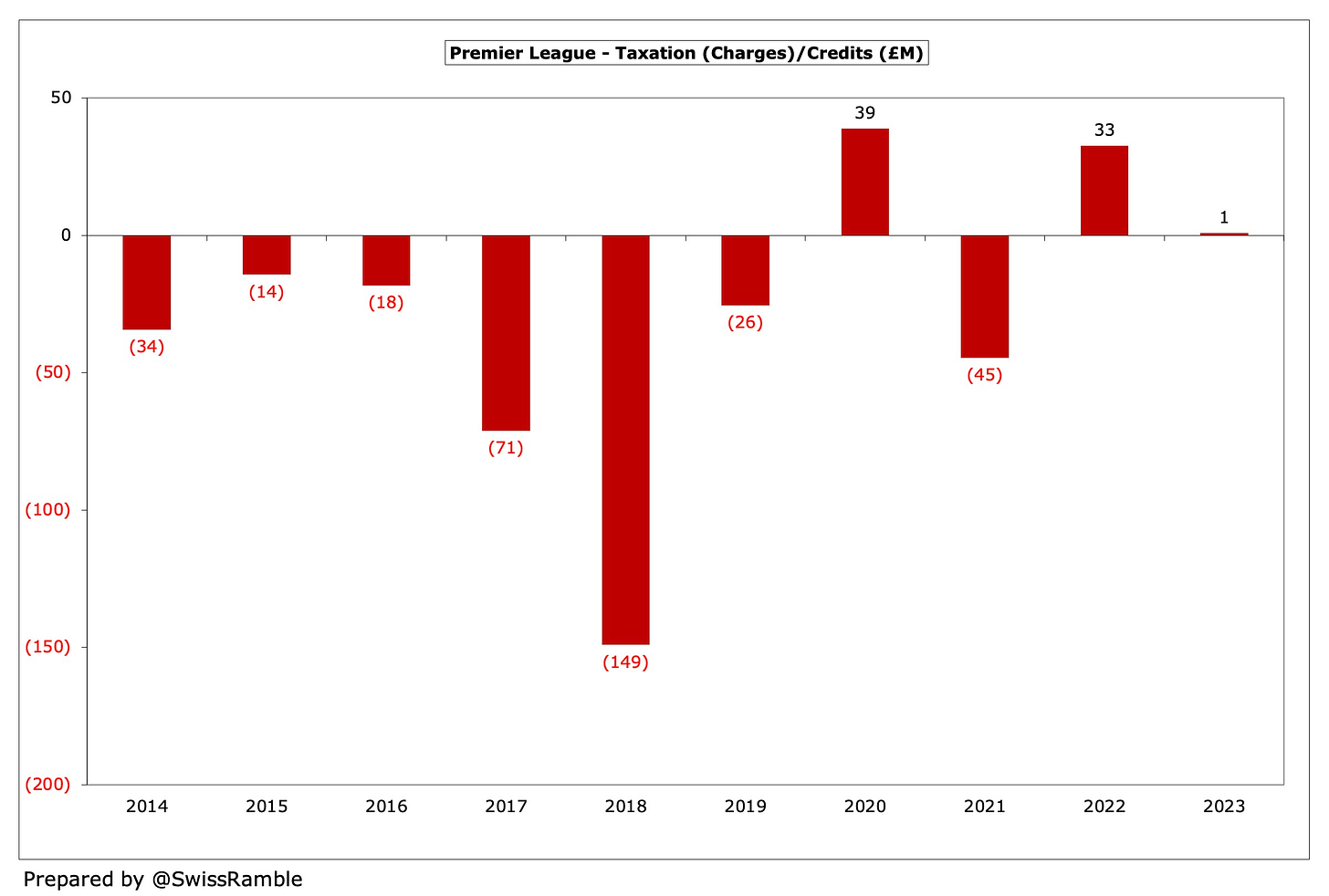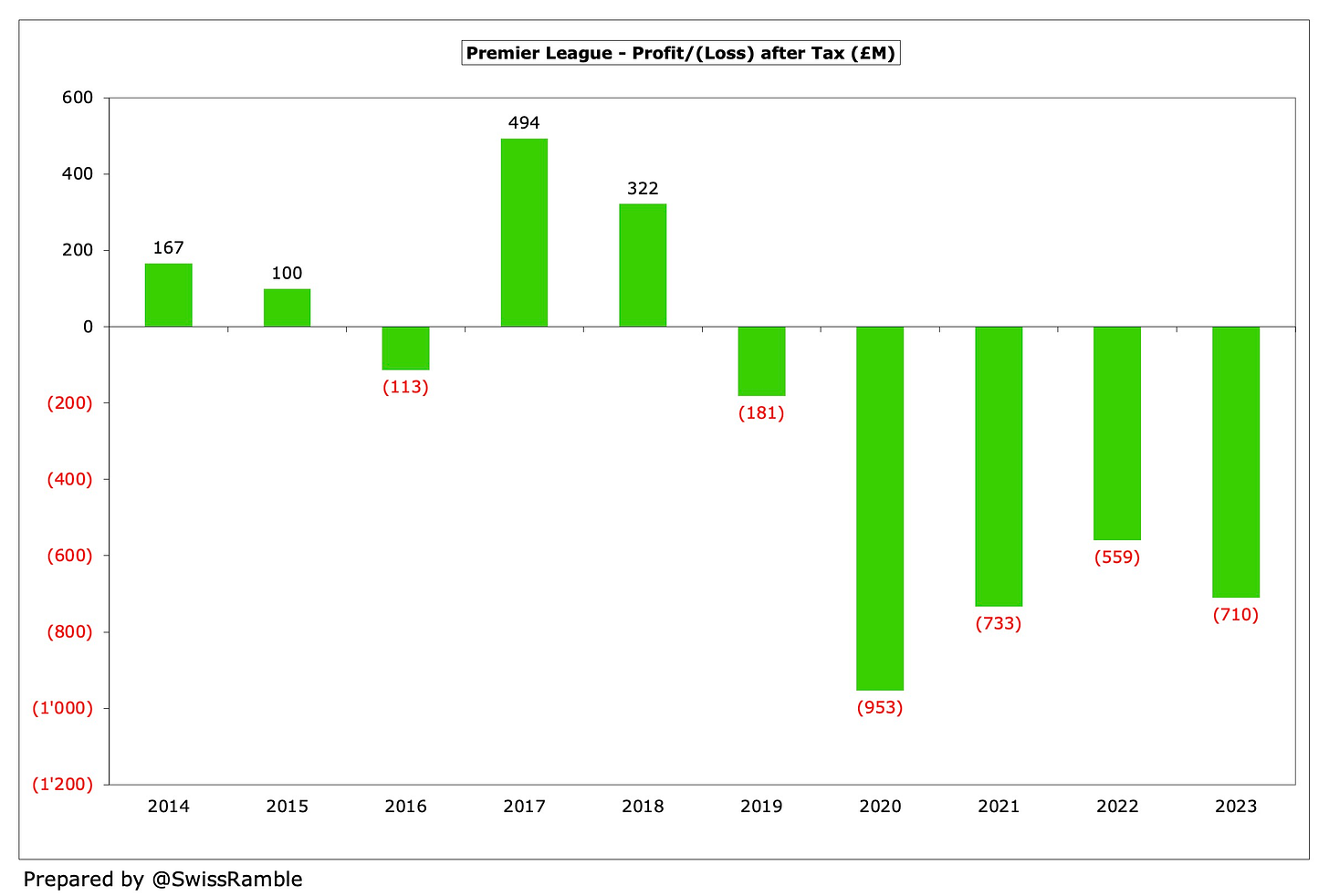While the Premier League has long been considered the big boy in the playground, based on its enormous revenue advantage over the leagues in other countries, some doubts have been expressed over its ability to actually make any money.
So let’s take a look at the trends over the last 10 years to see whether these shine any light on how the Premier League’s finances have been developing.
This analysis will cover the period between 2013/14 and 2022/23, which is the last season when clubs have published accounts.
Clearly, the figures for 2019/20 and especially 2020/21, when virtually all the games were played behind closed doors, were significantly impacted by the COVID pandemic, but it’s been pretty much business as usual in the last two seasons.
Profit/(Loss)
The impact of the pandemic was clearly shown by the huge losses reported during the COVID seasons with £992m in 2019/20 and £689m in 2020/21.
There had been a small recovery of sorts in the following season, though the loss was still a mighty £592m, but the loss widened again in 2022/23 to £711m, the worst in history (excluding the COVID-impacted seasons).
That means that the Premier League has now lost money five years in a row, adding up to a substantial £3.1 bln before tax. This is a dramatic worsening compared to the £1.3 bln profit that was generated in the preceding 5-year period, when it had posted profits on four occasions.
In 2022/23 half of the clubs in England’s top flight lost more than £50m, led by Aston Villa £120m, Tottenham £95m, Chelsea £90m and Leicester City £90m.
Tax usually does not have that big an impact on the bottom line for football clubs, which was certainly the case in 2022/23, when there was a tiny net £1m tax credit for the Premier League as a whole.
That said, it can sometimes be an important factor for some clubs and drive movements in overall profitability, e.g. 2018 included a £149m tax charge, while 2013 was boosted by £147m tax credit.
As a result, the picture for profits and losses is much the same after tax as before tax, though the increase in the net loss was a little larger in 2022/23, rising from £559m to £710m, as the tax credit was smaller.
EBITDA
The Premier League’s EBITDA (Earnings Before Interest, Depreciation and Amortisation), which strips out player sales, non-cash items and interest to give a reasonable proxy for cash profit, also decreased in 2022/23, falling 12% from £729m to £640m.
Keep reading with a 7-day free trial
Subscribe to The Swiss Ramble to keep reading this post and get 7 days of free access to the full post archives.







